Now, automakers are worried about the costs — not to mention their profitable pickup trucks — and are pushing for a revision. Environmentalists are resisting. President Barack Obama’s most concrete environmental achievement may have come in 2011 when the auto industry agreed to stricter targets for fuel efficiency and carbon dioxide emissions.
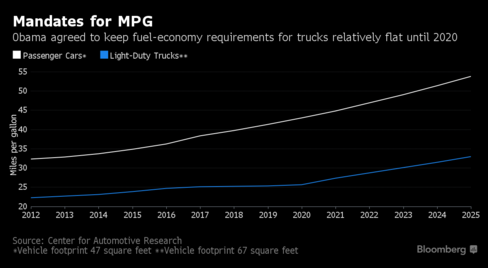
1. What are the U.S. standards?
The targets call for average fuel economy of cars and trucks to rise from 35.5 miles per gallon in 2016 to a projected 54.5 in 2025. Tailpipe CO2 emissions are to fall 35 percent to 163 grams per mile, a level similar to targets set in the European Union, China and Japan. Under a complex system, automakers are assigned corporate averages to meet based on the production volumes and the sizes of the cars and trucks they sell. So, for example, a standard-beating hybrid can help a company that sells standard-breaking pickups still meet its overall target. If automakers fall short of corporate mpg targets, they face stiff fines. If they miss CO2 standards, they could be barred from selling vehicles entirely. In addition, California and nine other states, accounting for about a third of the U.S. market, have said that by 2025, a projected 15.4 percent of new vehicles sold locally must be zero-emissions vehicles, meaning powered by batteries or fuel cells.
2. Why are U.S. automakers unhappy with future standards?
One key concession by Obama was to agree to backload many of the increases. That kept targets for light trucks relatively flat for a decade, but it means manufacturers are facing steep increases from 2021 to 2025. Automakers have endorsed the need for cleaner cars but say meeting ever-higher standards is proving a tricky task. General Motors’ redesigned Malibu sedan weighed 300 pounds less and had an engine 40 percent smaller but got just two more miles per gallon. At the same time, cheaper gas has tilted sales away from fuel-efficient cars, with Toyota Prius sales down 24 percent this year in the U.S. That’s increasing the burden of compliance on big pickups, which at Ford account for one-half of its profit in North America. In 2014, the company spent more than $1 billion to retool factories to build aluminum bodies for its F-150 pickup and introduced turbo-charged V-6 engines. To keep pace with the standards, the company is planning a hybrid F-150, and may introduce diesel and four-cylinder versions.
3. What happens next?
In negotiations that led to the rules, Obama agreed to an industry request for a midterm evaluation in 2017, when regulators will examine whether the costs and benefits of the clean car rules are meeting expectations. Fiat Chrysler Automobiles NV Chairman Sergio Marchionne in January called for more time to meet the targets. Automakers also want to change the rules to increase credits granted for eco-friendly technology like aerodynamic design that can help them meet their targets.

4. What’s the debate?
Automakers say that without revisions to the agreement, consumers will have to spend too much for fuel-saving innovations and consequently will be slow to embrace them. Environmentalists say that sounds like GM’s claim in 1973 that it would go bankrupt if California forced the installation of catalytic converters. Regulators have so far said that improvements to efficiency cost consumers much less than they can save on gasoline — and so benefit both the economy and the environment.
The Reference Shelf
VW Said Ready With $10 Billion Diesel Plan, to Devise Fix Later
California Has a Plan to End the Auto Industry as We Know It
Ford to Invest $4.5 Billion in Electrified Vehicles by 2020
Before it’s here, it’s on the Bloomberg Terminal. LEARN MORE
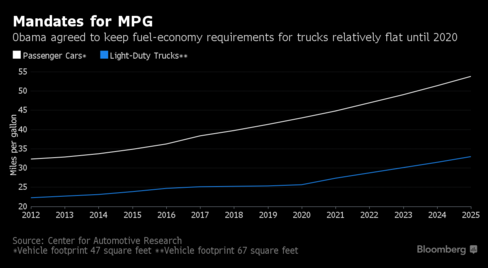
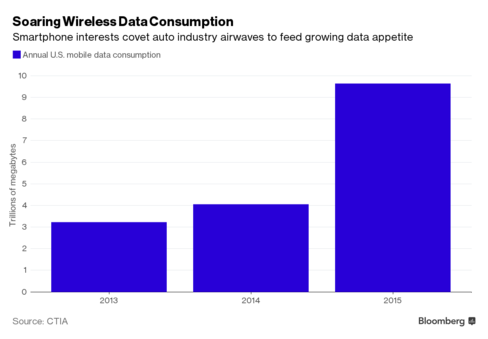
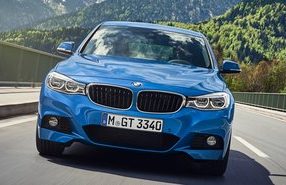
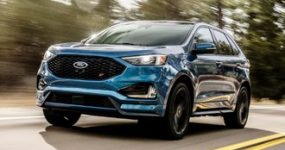

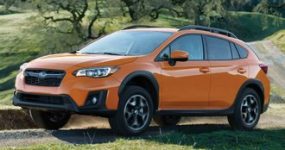

Recent Comments